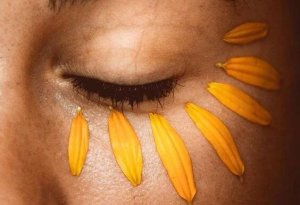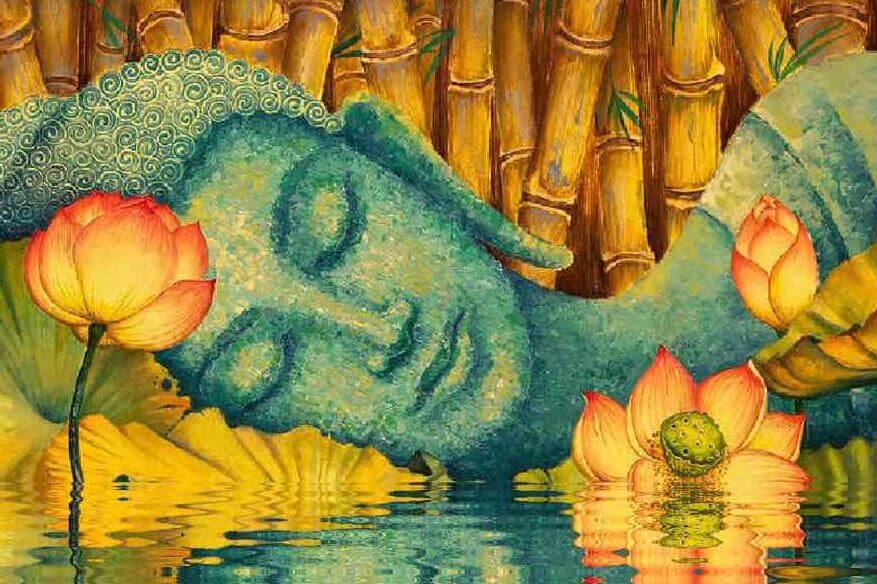7 Relaxation Exercises to Finally Get Rid of Anxiety

We have said it many times, anxiety in itself is not bad or unhealthy. In fact, it is adaptive, because it allows us to relate to our surroundings with an appropriate level of activation. Nevertheless, anxiety as an excess of activation becomes unhealthy for us, affecting us in our everyday lives. The truth is that, although we think it won’t happen to us, it can happen at any point in our lives.
That’s why, it is very important to develop personal resources and strategies that will allow us to control our emotions and thoughts. Because, as we all know, self-management is a skill that will allow us to develop adequately.
We should know that not every relaxation technique works for everyone equally. Regardless of the exercise, we should practice it with assiduity in order to mover forward.

This question may arise in the minds of you readers. Should I also do it even if I don’t have problems with anxiety? When is the right time to relax? First of all, we should point out that everyone would benefit from the lesson these exercises can teach us.
It’s necessary, furthermore, that we choose a moment of the day in which we won’t be interrupted. For example, if we choose nighttime, try to not fall asleep while doing it. The objective is to learn the technique! Let’s look at some exercises…
1. Learn to breathe
Obviously, we all know how to breathe, that’s why we’re alive. However, we don’t do it correctly in order to relax. There are many different ways to breathe, but the type of breathing that practically all of us perform is social and superficial.
Our usually rhythm is quick, oral and superficial. We breathe in through our mouths with little or no use of our diaphragm. Be it because we contract the abdomen when we take in air or because we lift the shoulders.
Thus, we only take in a small amount of oxygen, which results in a lack of vitality and less stamina. That’s why breathing is situated at the top spot of our list. Because, without a doubt, good breathing is the foundation of relaxation.
As a first rule, we should point out that our natural breathing should always take place through the nose. This way we filter the air that goes in and push out all of the impurities blocked off inside our noses.
And, though there are various appropriate types of breathing, the most physiologically appropriate is the complete kind. Here we leave you a video with instructions in order to learn to perform it in a deep manner.
2. Jacobson’s progressive relaxation
Just as Jacobson himself would affirm, “eliminating residual tension is the essential characteristic of this method”. Thus, given that mental tension activates the muscles, in order to avoid overloading, we should understand when muscles tense up and what we can do to relax them.
That’s why its essential that we be aware of the muscle groups which we can relax. This technique requires adequate training in order to be learned. Yet, we can obtain benefit from the resources that we find online in order to put it into practice. Here is this video for you to try it out.
3. Silva method or relaxing with visualization
There are some people who receive more benefit from a relaxation technique that induces the visualization of relaxing images. Here we have the Silva method, of which we can find numerous exercises on Youtube. We leave you this link for you to start researching about it.
4. Schultz’s autogenic training
This type of relaxation is based on the power of suggestion, so it induces pleasant sensations and thoughts that allow us to relax. It is based on the idea that we all have the ability of modifying our life by modifying our mental attitude. Here is a 10-minute exercise to try out the technique.
5. Mindfulness
When we talk about mindfulness, we can understand it as a meditation technique and state of awareness. One that generates a style of processing which translates into full awareness towards your surroundings and the events that are happening.
Here is a short video that helps us start delving into the method and our well-being along with it. Furthermore, in our page you will find a course about “Mindfulness for the everyday life” which will allows you to develop a state of mindfulness.
6. Walking or exercising
Walking or performing any kind of physical activity helps us channel the levels of activation in our body. That is to say, it helps us narrow down the worries which occupy our mind. Also, to reserve a parcel of our souls to ourselves, which is something we often forget to do. Without a doubt, this produces enormous problems for us at every level of our existence.
7. Listening to relaxing music
Listening to music is also a stupendous way of connecting with our most tranquil self. Do you know the saying “Music calms the beast”? Music truly helps reduce the rhythm of our mind.
If you think that you don’t have time to practice an exercise of daily relaxation, then it is precisely the time for you to start doing it. The more you practice, the more you will move forward. Remember that 21 days are enough to create a habit that will improve your life.
We have said it many times, anxiety in itself is not bad or unhealthy. In fact, it is adaptive, because it allows us to relate to our surroundings with an appropriate level of activation. Nevertheless, anxiety as an excess of activation becomes unhealthy for us, affecting us in our everyday lives. The truth is that, although we think it won’t happen to us, it can happen at any point in our lives.
That’s why, it is very important to develop personal resources and strategies that will allow us to control our emotions and thoughts. Because, as we all know, self-management is a skill that will allow us to develop adequately.
We should know that not every relaxation technique works for everyone equally. Regardless of the exercise, we should practice it with assiduity in order to mover forward.

This question may arise in the minds of you readers. Should I also do it even if I don’t have problems with anxiety? When is the right time to relax? First of all, we should point out that everyone would benefit from the lesson these exercises can teach us.
It’s necessary, furthermore, that we choose a moment of the day in which we won’t be interrupted. For example, if we choose nighttime, try to not fall asleep while doing it. The objective is to learn the technique! Let’s look at some exercises…
1. Learn to breathe
Obviously, we all know how to breathe, that’s why we’re alive. However, we don’t do it correctly in order to relax. There are many different ways to breathe, but the type of breathing that practically all of us perform is social and superficial.
Our usually rhythm is quick, oral and superficial. We breathe in through our mouths with little or no use of our diaphragm. Be it because we contract the abdomen when we take in air or because we lift the shoulders.
Thus, we only take in a small amount of oxygen, which results in a lack of vitality and less stamina. That’s why breathing is situated at the top spot of our list. Because, without a doubt, good breathing is the foundation of relaxation.
As a first rule, we should point out that our natural breathing should always take place through the nose. This way we filter the air that goes in and push out all of the impurities blocked off inside our noses.
And, though there are various appropriate types of breathing, the most physiologically appropriate is the complete kind. Here we leave you a video with instructions in order to learn to perform it in a deep manner.
2. Jacobson’s progressive relaxation
Just as Jacobson himself would affirm, “eliminating residual tension is the essential characteristic of this method”. Thus, given that mental tension activates the muscles, in order to avoid overloading, we should understand when muscles tense up and what we can do to relax them.
That’s why its essential that we be aware of the muscle groups which we can relax. This technique requires adequate training in order to be learned. Yet, we can obtain benefit from the resources that we find online in order to put it into practice. Here is this video for you to try it out.
3. Silva method or relaxing with visualization
There are some people who receive more benefit from a relaxation technique that induces the visualization of relaxing images. Here we have the Silva method, of which we can find numerous exercises on Youtube. We leave you this link for you to start researching about it.
4. Schultz’s autogenic training
This type of relaxation is based on the power of suggestion, so it induces pleasant sensations and thoughts that allow us to relax. It is based on the idea that we all have the ability of modifying our life by modifying our mental attitude. Here is a 10-minute exercise to try out the technique.
5. Mindfulness
When we talk about mindfulness, we can understand it as a meditation technique and state of awareness. One that generates a style of processing which translates into full awareness towards your surroundings and the events that are happening.
Here is a short video that helps us start delving into the method and our well-being along with it. Furthermore, in our page you will find a course about “Mindfulness for the everyday life” which will allows you to develop a state of mindfulness.
6. Walking or exercising
Walking or performing any kind of physical activity helps us channel the levels of activation in our body. That is to say, it helps us narrow down the worries which occupy our mind. Also, to reserve a parcel of our souls to ourselves, which is something we often forget to do. Without a doubt, this produces enormous problems for us at every level of our existence.
7. Listening to relaxing music
Listening to music is also a stupendous way of connecting with our most tranquil self. Do you know the saying “Music calms the beast”? Music truly helps reduce the rhythm of our mind.
If you think that you don’t have time to practice an exercise of daily relaxation, then it is precisely the time for you to start doing it. The more you practice, the more you will move forward. Remember that 21 days are enough to create a habit that will improve your life.
This text is provided for informational purposes only and does not replace consultation with a professional. If in doubt, consult your specialist.







